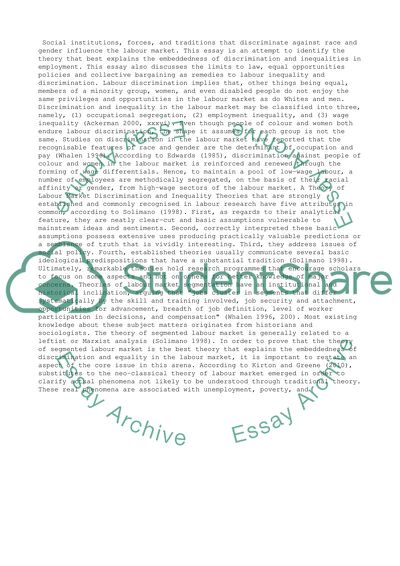Explaining Labour Marker Inequality and Discrimination Essay. Retrieved from https://studentshare.org/management/1450909-which-theory-best-explains-the-embeddedness-of
Explaining Labour Marker Inequality and Discrimination Essay. https://studentshare.org/management/1450909-which-theory-best-explains-the-embeddedness-of.


